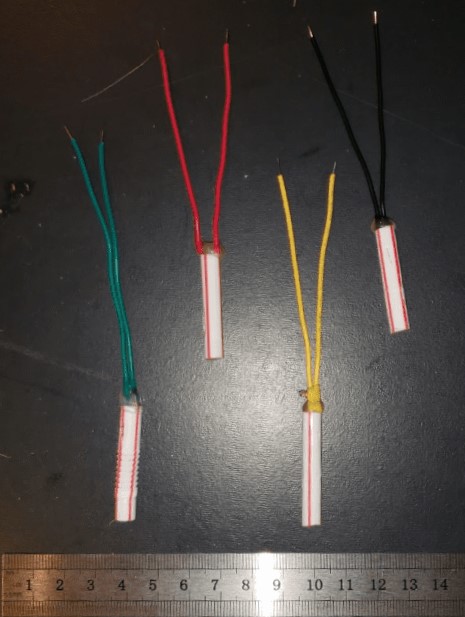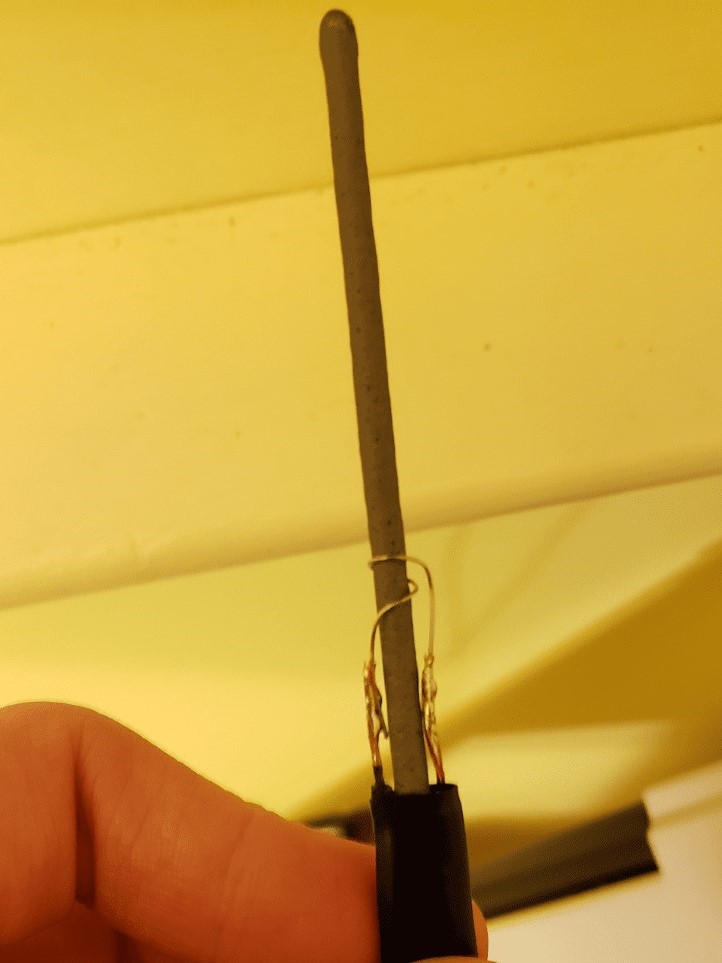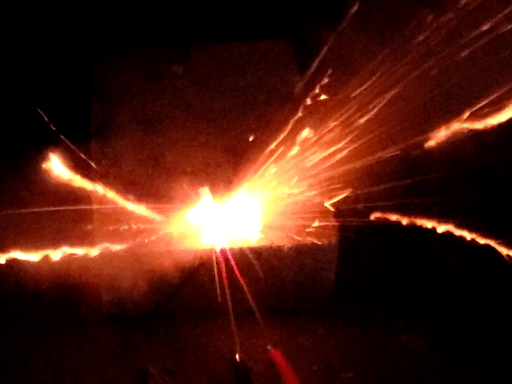Purpose
In a solid rocket motor, an igniter is what provides the initial heat to the surface of the propellant grain to initiate the chemical reactions that cause burning (deflagration) of the grain. The igniter should also be able to be activated electronically from a distance. There are several characteristics that make an igniter optimal. These characteristics are for the purpose of causing fast motor startup, and uniform burning surface ignition. Fast startup time is critical in many commercial applications such as missiles and boosters, and a matter of safety in amateur experimental rocketry. Uniform burning surface ignition is necessary in solid motors to be able to accurately predict the thrust curve. For example, having a delayed ignition of only the ends of a BATES grain will cause the resulting thrust curve to be very triangular instead of flat.
Achieving fast startup and uniform burning surface ignition are often coupled effects that can be achieved in several ways. For both conditions, the igniter must quickly release a large amount of heat over the whole surface of the grain, this is most easily done with a hot gas that can fill the chamber quickly. The temperature must also be very high which can be done by having hotter reacting metal particles within the expanding hot gas. Another feature a good igniter will have is providing an initial pressurization to the chamber. Burning rate of propellants is a function of chamber pressure, so there is a startup transient in the motor as the chamber pressure is increasing up to steady state. Providing an initial pressurization can shorten or even eliminate this startup transient.
Our Igniters
During our development we have used three different igniters. These can fall into two categories, straw igniters and sparkler igniters. Straw igniters are shown below to the left. These consist of a straw filled with a pyrolant that has a string of nichrome or filament extending into the pyrolant. The ends of the straw are sealed with hot glue or a similar adhesive. Sparkler igniters, shown below on the right, are simply sparklers with a piece of nichrome wrapped around it. In both cases the igniter is lit by an electrical current heating up the nichrome.


The sparkler igniters are the quickest to produce, but cause slowest ignition times. Ignition time can often be upward of 10 to 20 seconds, with a startup transient about half this time. This causes uneven burning, and is insufficient for actual launches. At this point sparkler igniters have been mostly phased out, but can still be useful when build time must be minimized, and the long ignition time can be tolerated.
The straw igniters have proven to be more successful. The original design used a mixture similar to black powder as the pyrolant. The black powder would be lit, and build up pressure in the straw until bursting. The hot gasses released not only light the grain, but pressurize the chamber This method, while better than the sparkler igniters, still had ignition times in the range of 10 seconds. The most successful igniter has been using a pyrolant developed by Richard Nakka known as MDP. This pyrolant is similar to the composition of the fuel grains, but replacing some of the fuel with sulfur and iron ixode particles (visit https://www.nakka-rocketry.net/igniter.html#MDP for more details). This reacts into a mixture of hot gasses and hot reacting metal particles. These two products work in conjunction to light the grain quickly and evenly. Slots are also cut in the side of the straw igniter so instead of the straw bursting from pressure, it shoots the products out the side to provide sustained heat to the grain during ignition time. Average ignition time including startup transient for the MDP straw igniter is usually under 3 seconds. A picture of the igniter being tested is shown below. Note both the presence of hot gasses as well as additional metal particles.
